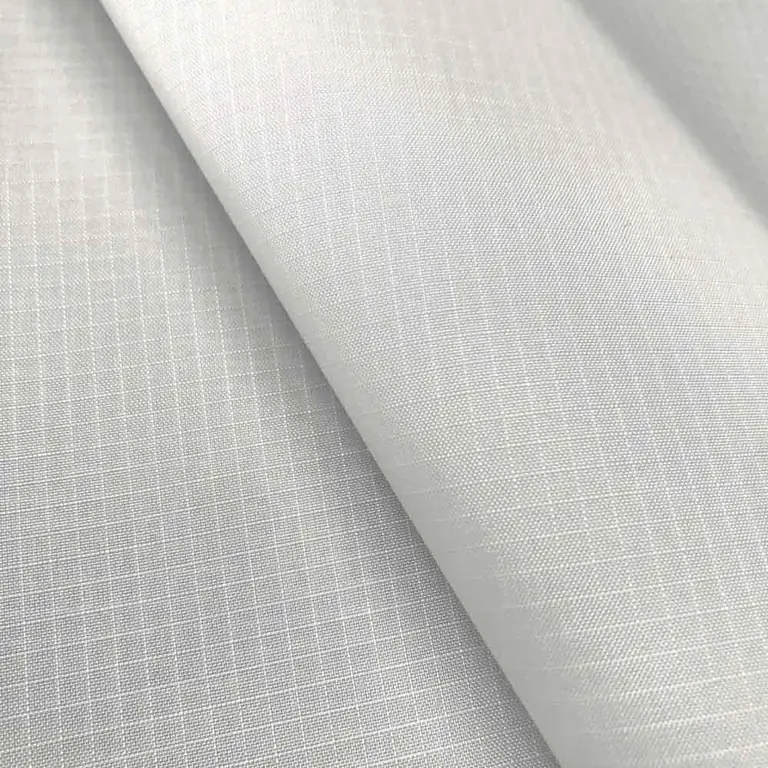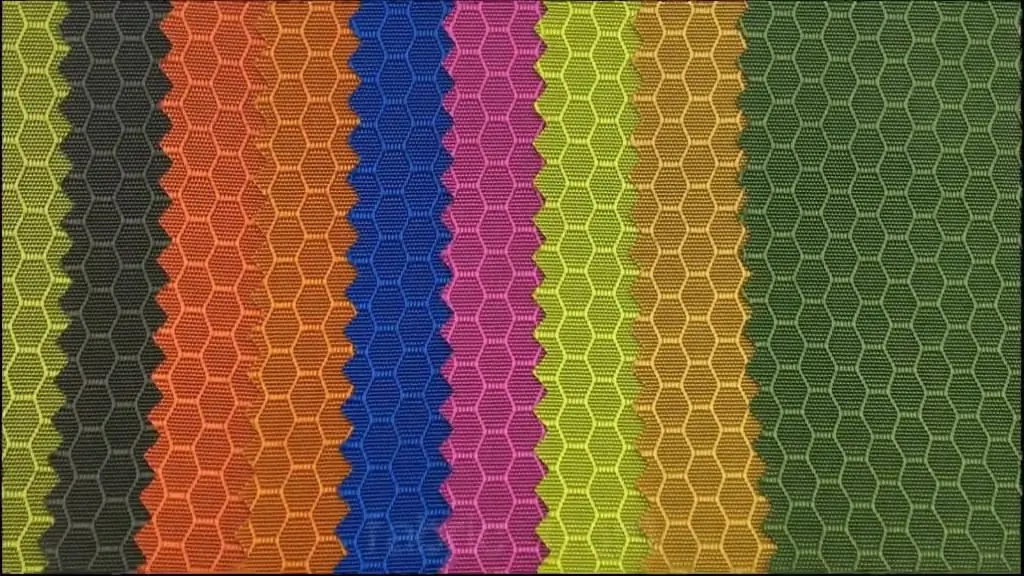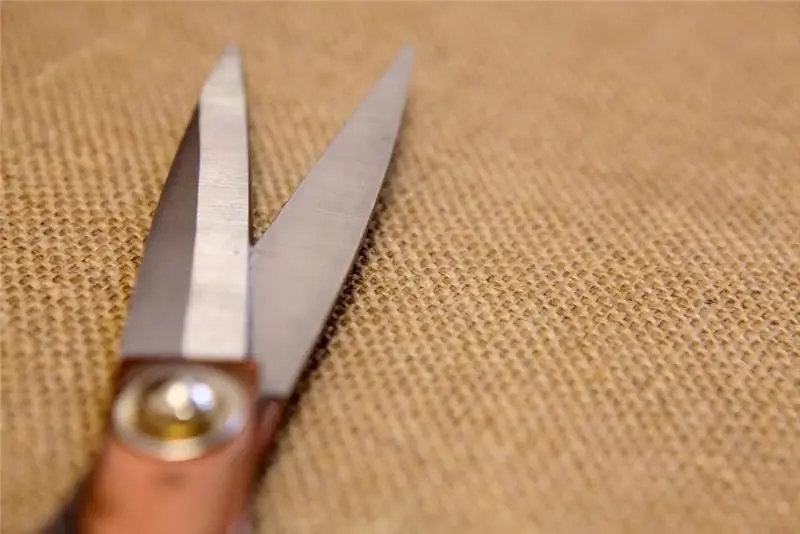2025 Author: Howard Calhoun | [email protected]. Last modified: 2025-01-24 13:10:35
Jute fabric is widely used both in everyday life and in production. This environmentally friendly material has a lot of interesting features. It is made from the stems of jute, a plant found in the wild, mainly in the tropics.
How raw materials are grown
In the common people, such a fabric is usually called burlap. Cultivation of jute in tropical countries involves the use of mostly manual labor only. This plant is cultivated in third world countries, in Asia and Africa. Approximately 150 days after planting, jute - a tall powerful plant - blooms. At this time, the harvest time comes in the fields with this crop. Jute is cut, collected in sheaves and left in the field until the leaves fall.
Next, the plants are transferred to the nearest body of water and left to soak for a few days. Then the jute stalks are peeled and separated into fibers. This raw material is subsequently hung on poles to dry. Finished jute fiber is collected in bales and sent to the market.

How fabric is made
In enterpriseslight industry from jute make twisted threads. Then the actual burlap is woven on the machines. The density of jute fabric can be different and depends on how close the warp and weft threads are to each other. The burlap used for packaging various products is known to have a rather loose structure.
Weaving in the manufacture of jute fabric is usually linen. In this case, either pure jute thread or one made with the addition of cotton, silk, flax, or polymer threads can be used as a raw material in weaving industries.
Basic Features
The advantages of natural jute fabric include in the first place:
- no tendency to electrify;
- hygroscopicity;
- resistance to deformation;
- high tensile strength;
- breathability;
- good thermal insulation properties.
Of course, the undoubted advantage of such material is its very low cost. Jute is by far the cheapest fabric. In many ways, this explains its great popularity among consumers.

Of course, natural jute fabric has some drawbacks. This material is quite rough to the touch. When using raw materials of low grades, it may also be brittle and too dry. In addition, natural jute can be attacked by putrefactive bacteria and deteriorate when exposed to sunlight.
To make this fabric less coarse,in its manufacture, cotton threads are used as an additive. It is possible to reduce the brittleness and dryness of jute by using flax in the manufacture of this material. This is how the traditional loose canvas for making bags is usually made today.
What is used for
Jute is used mainly for sewing bags. And also this fabric is often used to make water filters. This material is absolutely environmentally friendly. In addition, jute, unlike synthetics, does not wash out the remains of monomers during filtration. That is, water after passing through this material becomes almost crystal clear.
Sometimes jute is used to make various kinds of interior items. For example, some parts of upholstered furniture can be sheathed with them. And also screens are often made from jute. In some cases, this material can also be used to make various kinds of decorative crafts - boxes, bags, etc.

Use of packaging jute fabric
The widespread use of this material for the manufacture of packaging is primarily due to its high tensile strength. Jute burlap is a fabric that can withstand the weight of even the heaviest goods. Among other things, jute has a loose structure, and therefore is very well suited for food packaging. Root crops packed in such bags, for example, are well ventilated, and therefore stored longer.
Besides potatoes, beets, carrots and other vegetables, packagingjute fabric can be used for the following:
- bulk products - sugar, flour, s alt;
- piece goods;
- building materials.
How it can be dyed and bleached
The color of jute fabric is most often beige: from light to almost brown. In the production of screens or decorative crafts, the thread intended for the manufacture of such material is pre-bleached and dyed. These procedures are performed with strict adherence to certain technologies.
In order to get white jute material, for example, use the following technique:
- chlorine-containing solution is diluted with water in certain proportions;
- pour the solution into a large container, put a jute thread in it and stand for several hours;
- I pull the jute out of the container, rinse and dry.
At home, bleaching of jute can be done using the usual "Whiteness". This product is diluted with water in a ratio of 1 liter per 250 ml. Keep the thread in this solution for 8-9 hours.

For dyeing jute, intended for the manufacture of decorative products, acrylic paints and paste are usually used. Such products are also pre-diluted with water. Paint for jute fabric or thread is diluted in certain proportions. The amount of water used for dilution depends on what shade is supposed to be obtained in the end.
Interesting items
Jute is often used to make variouskind of handicrafts. From this material, for example, a very beautiful filigree is obtained. In this case, jute thread is woven according to patterns into spectacular patterns. Curls from such a cord are coated with glue and laid on some flat surface. After they dry, the resulting patterns are removed and used to make boxes, panels, etc.

Jute is also used for knitting rugs for front doors, making cords for amulets, decorative tassels, etc. Jute fabric items such as bracelets, pendants, and earrings look very nice. Such jewelry is made, of course, from a very dense material of this variety with a backing.
Recommended:
Rip-stop fabric: what is it, composition, characteristics, weaving threads and application

Rip-stop fabric - what is it? This is a high-strength material that has a combined weaving structure with reinforced yarn. It has many modifications. Rip-stop fabric is used for sewing all kinds of uniforms and things for recreation and sports, expeditions and hiking, fishing and hunting, overalls. Consider what composition it has, what properties it has
Organizational structure of Russian Railways. Scheme of the management structure of Russian Railways. Structure of Russian Railways and its divisions

The structure of Russian Railways, in addition to the management apparatus, includes various dependent divisions, representative offices in other countries, as well as branches and subsidiaries. The head office of the company is located at: Moscow, st. New Basmannaya d 2
Foam vapor permeability: composition, properties, structure, classification, application and safety

The thickness and vapor permeability of the foam - this is not all you need to know when buying material. It is important to take an interest in sound and windproof properties. If the walls are insulated with foam, they will not need wind protection. The soundproofing of the building will be improved. Thus, the soundproofing properties are explained by the cellular structure
Ripstop fabric: what is it, composition, characteristics, purpose and application

When asked if it is a ripstop fabric, the answer is usually about a durable material. However, the name unites a whole category of very durable materials that are produced using a special technology. It comes from the English phrase (rip - tear, stop - cessation)
Russian Space Forces: description, structure and composition

The Russian Air Force begins its history on August 12, 1912 - in fact, then, by order of the General Staff, they created the staff of the aeronautical unit. And already when the First World War was going on (1914-1918), aviation became a necessary means of aerial reconnaissance and fire support for ground forces from the air. It can be said with full confidence that the Russian military space forces have a rather rich and extensive history

